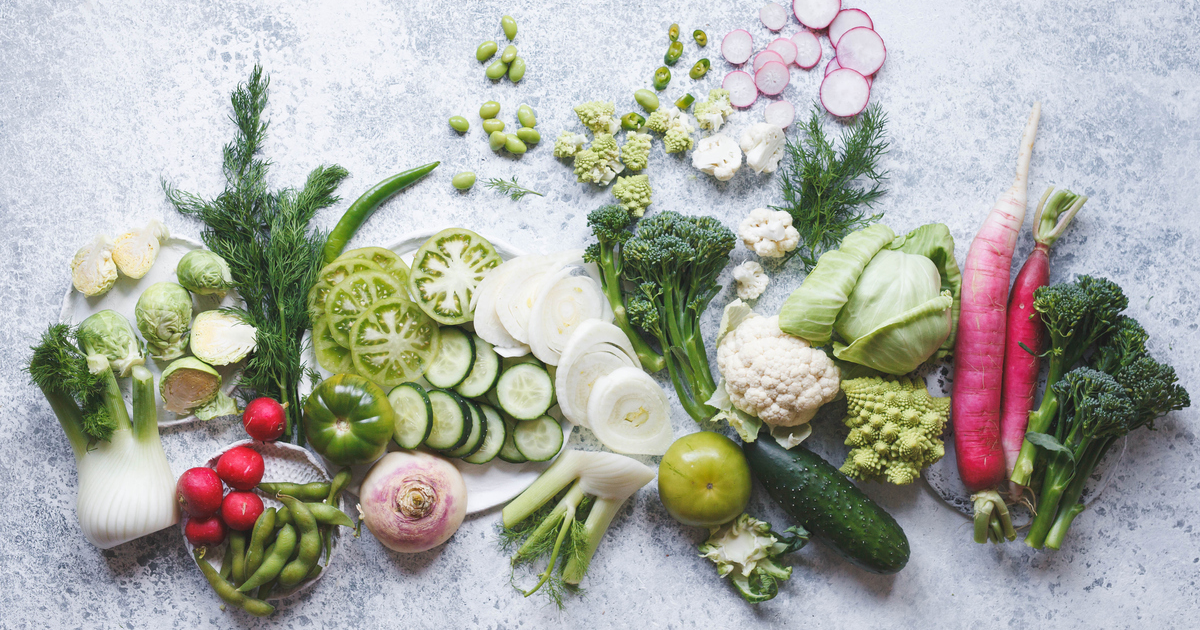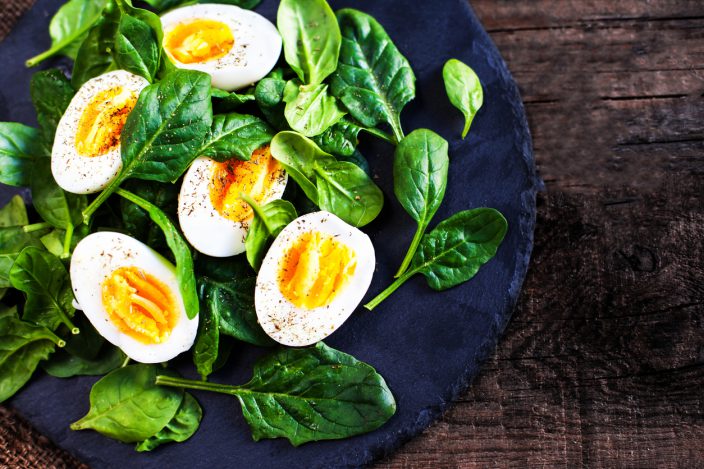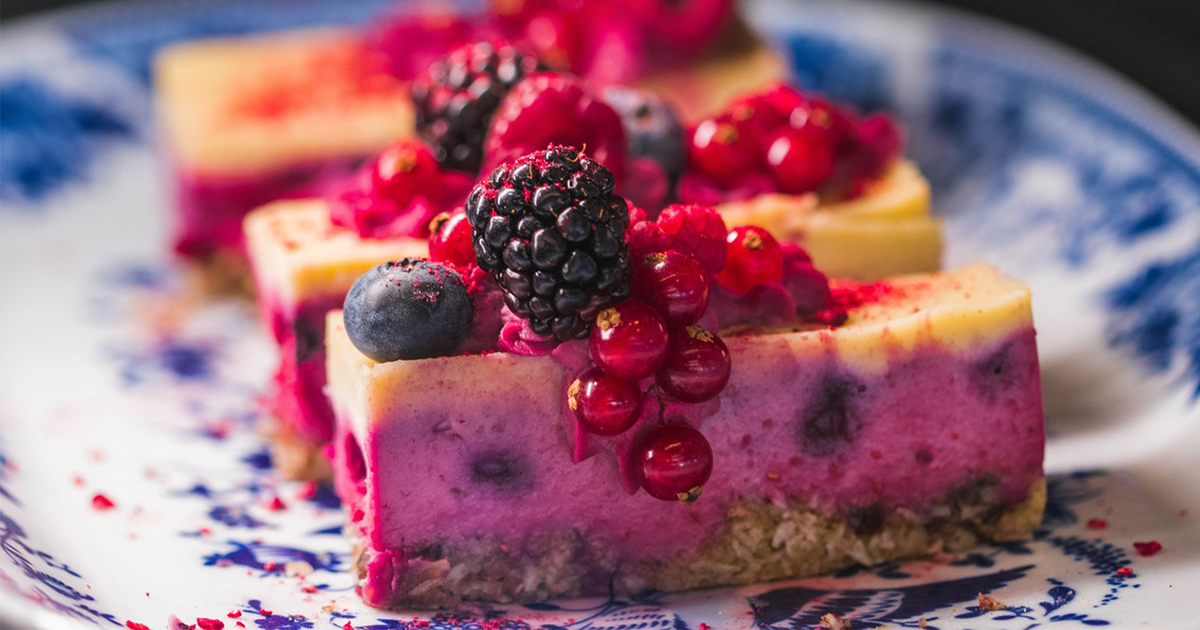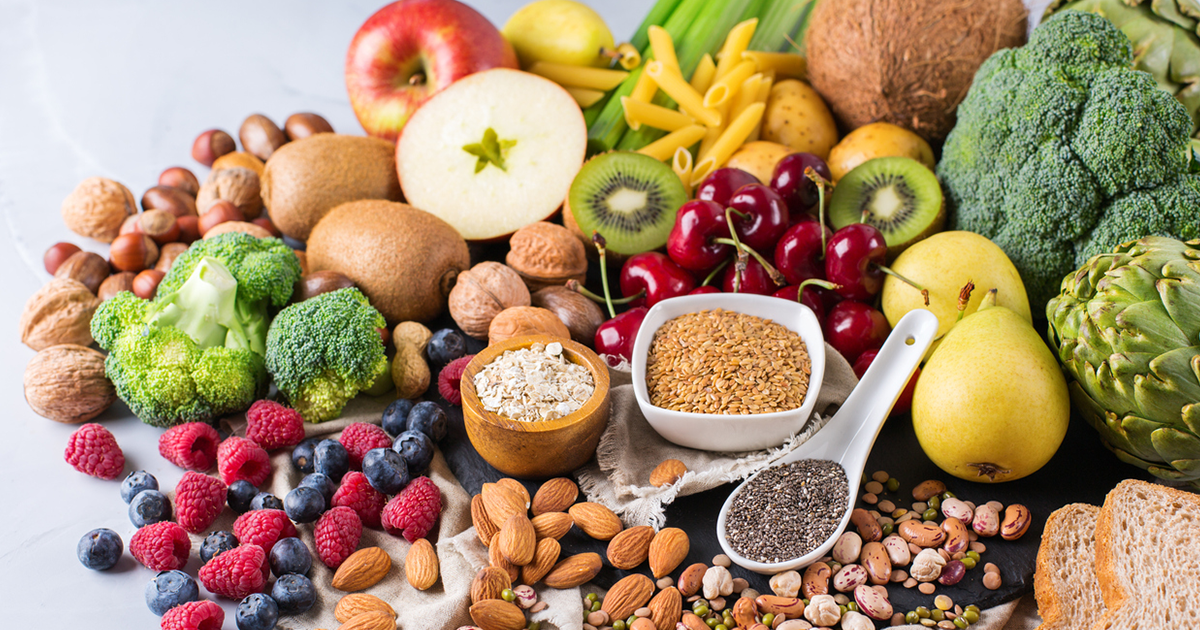Fibre is found in many plant-based foods and is not broken down completely by the body. It is important for a healthy digestive system and has been linked to reduced cholesterol, improved glycemic control, a healthy heart, and reduced risk of some cancers. The recommended fibre intake for adults in the UK is 30g per day. This might sound like a lot, but with some simple changes, meeting the recommended fibre intake on a low carb diet is achievable! Try out our top 13 tips for adding fibre to a low carb diet.
1. Add green leafy vegetables to your meals
Green vegetables are packed full of goodness, including fibre. Try adding a big handful of low carb green vegetables such as spinach, kale or spring greens to your soups, stews and curries to up the fibre content. For an extra fibre boost, choose mature spinach over baby spinach as per 100g, mature spinach contains almost four times more fibre!

2. Make a chia pudding for breakfast
Chia seeds provide an impressive 32g of fibre per 100g, so including them in your breakfast is a great way to help you hit your daily fibre goal. A chia pudding is easy to make, and you can make it the night before to save time on busy mornings.
3. Snack on nuts
If you find yourself reaching for a mid-afternoon snack, choosing to have a handful of nuts can be an easy way to boost your fibre intake on a low carb diet. For example, a 30g portion of almonds contains 4.8g of fibre and just 2g of carbs.

4. Make your own fibre packed yoghurt topper
Greek yoghurt can be a staple in low carb breakfasts, snacks and desserts, so why not take the opportunity to add some fibre with a homemade yoghurt topper! Simply mix together 30g each of pumpkin seeds, sunflower seeds, chia seeds and ground flaxseeds to make a yoghurt topper to serve 3 people. One portion contains 7g of fibre and only 4g of carbs.
5. Add other low carb vegetables to your meals
In addition to green leafy vegetables, try adding a range of other low carb vegetables such as broccoli, courgettes and green beans to your meals to help boost your fibre intake. Just 100g of raw broccoli provides 4g of fibre and only 3.5g of carbs.
6. Add some berries
Berries are a tasty low carb option if you are looking to jazz up your breakfasts or desserts. Raspberries in particular are a good low carb source of fibre as they contain 6.7g of fibre and 4.6g of carbs per 100g. Why not try having a handful of raspberries with some yoghurt and your homemade fibre packed yoghurt topper as a quick dessert!

7. Embrace the versatility of coconut
Coconut is a fantastic low carb ingredient that can be used in both sweet and savoury dishes, and as an added bonus, it’s a good source of fibre! Unsweetened desiccated coconut contains 21g of fibre per 100g, so why not sprinkle some over your yoghurt bowl for dessert, or over a curry for dinner. Alternatively, you could scatter some coconut flakes over your breakfast pancakes or add some to a handful of nuts for snack.
8. Have an avocado with your eggs
As well as being a healthy source of fats, one medium avocado contains almost 5g of fibre. Including an avocado with your poached, boiled or scrambled eggs will add some fibre to your meal.

9. Indulge in some dark chocolate
Dark chocolate is a surprising source of fibre, containing almost 12g of fibre per 100g! If you fancy a treat, try having a couple of squares of 85-90% cocoa dark chocolate to sneak in some extra fibre.

10. For plant-based eaters try including a small-moderate amount of beans and pulses
Edamame beans are a good low carb option with just 5g carbs per 100g and 6.7g of fibre per 100g. Other beans and pulses do contain fibre but are higher in carbs, so should be eaten in moderation on a low carb diet. For example 100g of drained, tinned chickpeas, provides 4.8g of fibre and 15g of carbs.
11. High fibre desserts
Even the tastiest of desserts can provide you with some nutritional benefits. Try making a low carb chocolate avocado mousse drizzled with almond butter for a tasty fibre boosting dessert. You could even add some fresh berries for an extra fibre boost.

12. Boost your smoothies
Although smoothies can be a high source of carbs, why not try making your own low carb version using avocado, spinach, coconut milk and blueberries!
13. Swap your flours
Low carb flour swaps are staples in a low carb kitchen. The most common choice is often ground almonds, which contain almost 8g of fibre per 100g. Next time you need a low carb flour alternative, why not try using coconut flour, with 42g of fibre per 100g, or ground flaxseed which has 27g of fibre per 100g.
References
[1] Public Health England. (2016). Government Dietary Recommendations: Government recommendations for energy and nutrients for males and females aged 1-18 years and 19+ years. [pdf] Available at: https://assets.publishing.service.gov.uk/government/uploads/system/uploads/attachment_data/file/618167/government_dietary_recommendations.pdf
[2] British Nutrition Foundation. (2018) Dietary Fibre. [online] Available at: https://www.nutrition.org.uk/nutritionscience/nutrients-food-and-ingredients/dietary-fibre.html (Accessed 15/01/19)
[3] Zinn, C., Rush, A. and Johnson, R. (2018). Assessing the nutrient intake of a low-carbohydrate, high-fat (LCHF) diet: a hypothetical case study design. BMJ Open, 8. DOI: 10.1136/bmjopen-2017-018846
[4] Gill, S., Ozerianskaya, N. and McKenzie, Y. (2016). Fibre. [online] Available at: https://www.bda.uk.com/foodfacts/fibre (Accessed 16/01/19)
[5] Nutritics. (2018). Nutritics V5.09. Dublin: Nutritics



